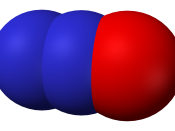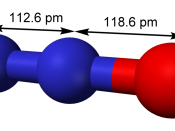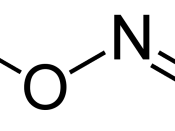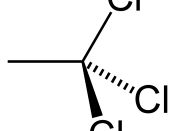Inhalants are a large group of chemicals. All can be inhaled for its effects. Thousands of commercial and industrial products have been used as inhalants, along with gases made for medical and dental work.
All inhalants go through the lungs enter the bloodstream and, flow to the brain. Different types of inhalants produce different effects. Users may be excited and, then fall asleep. Physical effects may include dizziness, nausea, vomiting, blurred vision, sneezing, coughing, staggering, slow reflexes and sensitivity to light. Nitrous oxide produces a loss of motor control, hallucinations and an increased tolerance for pain.
Anti-freeze, gasoline, degreaser, windshield washers, foam dispensers, acetone, cleaning fluid, spot remover, shoe polish, nail polish remover; gasoline, household cements, lacquer thinners, lighter fluid, model cements, airplane glue, plastic cements, rubber tire patching cement, paint and varnish removers, paint brush cleaners, household waxes, typewriter correcting fluids, thinners and, carbon tetrachloride are some of the household items that can be huffed.
Solvents are liquids that vaporize at room temperature. They are in many cleaning products and industrial items. Women who use solvents during pregnancy could affect their baby; they may have Fetal Solvent Syndrome, which includes birth defects such as small head, deep set eyes, small face, disfigured nose and ears, and short fingertips. Aerosols are sprays that contain solvents and propellants. They include spray-paint and other types of sprays. Gases include those used in household and, medical anesthetics. Medical anesthetic gases include ether, chloroform, and nitrous oxide and are the most abused gases. Nitrites do not work on the central nervous system like other inhalants; they open blood vessels and relax the muscles. The two most abused nitrites are amyl and butyl.
Damage to the cells that send sound to the brain may cause deafness. Inhalants can reduce the amount of oxygen carried in the blood. Gas vapors with benzene can cause leukemia. Damage can happen in the cerebral cortex and cerebellum causing personality changes. Sudden sniffing death syndrome is a pause in the hearts beat and, can cause heart failure.
The kidneys lose their ability to control the acid in the blood. Kidney stones may develop. Fatty tissue may cause liver damage. Use can damage lungs and impair breathing. Inhalant abuse can lead to muscle weaken and reduced muscle tone and strength. Damage to the nerves can cause tingling, numbness, or paralysis. A rash known as glue sniffer's rash may appear around the nose and mouth. Research shows that nitrites weaken the immune system.
Most inhalant use is experimental. People who use inhalants often can build up a tolerance and, more and more inhalant is needed to have the same effect. Regular use also leads to a wanting for the high which makes it hard to stop using. When inhalant use is stopped withdrawal symptoms may include nausea, loss of appetite, tremors, anxiety, and depression. According to a study by the national household survey on drug abuse, almost seventeen million Americans have tried huffing or inhaling household products. Although their was a small decline in huffing since 1995, experts say that millions of people will try huffing at least once, and some of them will make it a habit.
More people are using inhalants than those who use illegal drugs. People who will never try illegal drugs will try inhalants because they are legal and easy to get. WhiteÃÂs and Hispanics from twelve to seventeen are more likely to use inhalants. In high school teens find easy access to inhalants in wood shop, auto shop, and the janitor closet. Stephen Dewey an inhalant researcher at the U.S. department of energy in Brookhaven New York says that many parents and teachers donÃÂt know how dangerous these products are.
Some long term effects may be reversible, but others are permanent. When inhaled, solvents are carried by the blood and stored in fat tissue in the body. Organs that have high blood flow and, that have a lot of fatty tissue, such as the brain, liver and kidney, are more affected than others. If inhalant use is stopped, damage to the liver and kidneys may heal, but damage to the brain is usually permanent. Studies using scans of people's brains after long-term of solvent use showÃÂs that solvent use can cause the brain to shrink, which can affect thinking, memory and movement control.
How inhalants effects you depends your age, how sensitive you are to it, how much you use, how long how often you use it, how you huff it, the setting you're in, whether or not you have any medical conditions, if you've taken any alcohol or other drugs. There is no exact number on how many people have died from huffing. Many of the deaths are called suicides or accidentsSolvents are usually huffed from a plastic bag, which is held around the nose and mouth. People who use solvents can pass out with the bag still around the nose and mouth. Choking on vomit when unconscious is another cause of inhalant death. Huffing affects the way people feel about themselves and things around them. It makes some people feel powerful and, others get depressed. Suicidal thoughts are common among people who use solvents.
Nitrites dilate the blood vessels and relax muscles. The heartbeat quickens and blood rushes to your head giving you a head rush. Nitrites also cause headaches, dizziness, nausea and flushing. Nitrous oxide starves the body of oxygen. People who use nitrous oxide while standing can fall and injure themselves. Nitrous oxide is very cold when it is released from the bottle and, can freeze skin. The force in the bottle can harm the lungs. High levels of nitrous oxide even with plenty of oxygen can damage nerves; this can cause numbness, weakness and loss of balance.
Long term inhalant abuse can cause kidney damage causing acute kidney failure. Electrolyte imbalances can occur, and cause you to have muscle weakness, nausea, vomiting and mental confusion. A deadly form of kidney disease is glomerulonephritis can be caused from inhalant use. Pregnant women are at higher risk to.
Unusual liver function occurs with long term inhalant abuse. The liver will usually return to normal after many weeks of non use, but if abuse continues liver defects may occur. Heavy alcohol use, which also causes liver toxicity.
You can suffocate from using inhalants. This happen because inhalants keep oxygen out of the lungs and, the central nervous system so that the person stops breathing. Long term solvent abusers usually have lung inflammation, pneumonia, and other infections. Deaths associated with inhalant abuse often result from asphyxia.
Inhalants affect the brain quickly. The brain needs oxygen like the heart does. When the brain doesn't get enough oxygen, it makes you feel light headed and dizzy. It might also cause you to faint. People with brain damage often lose their ability to think, walk, or talk as well as they did before they started using inhalants. Unusual rhythms in the heart have been linked with the use of many inhalants. This can cause sudden death if the person becomes excited.
Effects on the nervous system can cause brain damage causing movement damage, and damage to the peripheral nerves causing numbness, weakness and muscle paralysis. Although evidence indicates that long term abuse causes brain damage and, is usually permanent.
Benzene, a solvent that is toxic to the bone marrow and, can cause anemia and leukemia. Another solvent is methylene chloride it is turned into carbon monoxide, which stops the transport of oxygen by the blood; brain damage may result from it. Heart patients and, smokers are at higher risk.
Inhalants destroy nerve fibers by causing the myelin around them to weaken. Myelin is found in a thick layer around the axons, the long parts of nerve fibers through which impulses are sent. When myelin breaks down the nerves become less able to send messages. When thereÃÂs a normal layer of myelin around the axon, nerve impulses go as fast as 120 meters per second. Without myelin their sent at about 2 meters per second.
Depression, insomnia and paranoia are common among inhalant users. Long term use also can lead to paranoid psychosis. Inhalants may cause psychotic symptoms in any person but, they do not cause schizophrenia in people without prior mental disorders. Evidence also shows that inhalant use can cause brain damage causing drops in intelligence quotient scores.
Having or using solvents and aerosols is not aloud under federal law, and there are few drugs as cheap and as available. But because they have many household and industrial uses, it is hard to control use of them. Some states in the have controlled the sale of glue and made it illegal to huff solvents. Some dealers of the products limit access.
Cite: Wikipedia.com, answers.com, yahoo.com, inhalantsinfo.com





